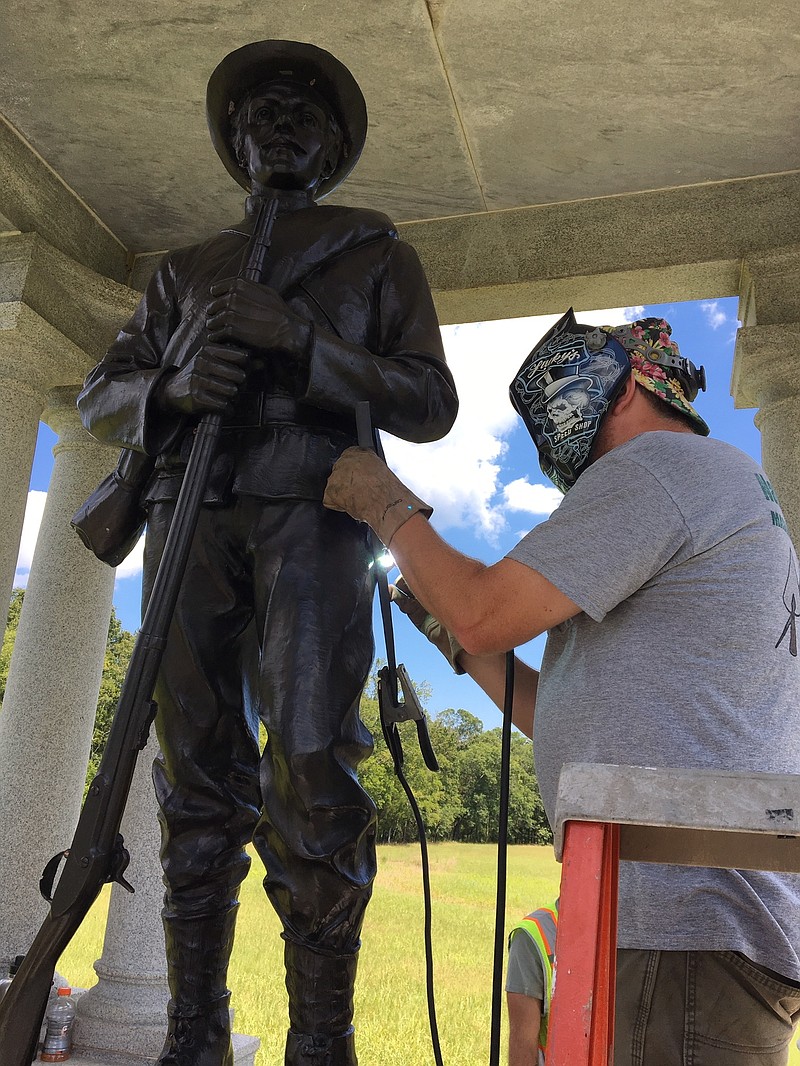It was the first officially proclaimed Thanksgiving holiday - the fourth Thursday in November, that is - but things in Chattanooga were in a mess.
It was Nov. 26, 1863, and the previous day had seen the Confederate Army of Tennessee driven off Missionary Ridge, out to the countryside and on into Georgia. Earlier in the week, the same army had been routed from Lookout Mountain.
The Union Army was firmly in control of Chattanooga as residents sat down to give thanks for whatever troops hadn't requisitioned from their homes and their cupboards.
Guns at Fort Wood began to boom at noon, "chimes so grand that men began to uncover their heads," Chicago war correspondent Benjamin F. Taylor wrote, marking the day.
But those in Chattanooga who weren't celebrating the day signed into law by President Abraham Lincoln just two months earlier had more immediate duties. They were burying the dead.
They were "doing for dead comrades," Taylor wrote, "what somebody may do for them the next day or the next."
East of Missionary Ridge, though, skirmishes continued in what is today Brainerd, Tyner and East Brainerd, with the Confederates eventually retreating into the Graysville and Ringgold communities of North Georgia.
Charles A. Dana, at the time a special agent of the War Department and present in the area, was thankful for the events of the previous day as he wrote on Thanksgiving to Secretary of War Edwin M. Stanton.
"The storming of the ridge by our troops was one of the greatest miracles in military history," he said. "No man who climbs the ascent by any of the roads that wind along its front can believe that 18,000 men were moved up its broken and crumbling face unless it was his fortune to witness the deed. It seemed as awful as a visible interposition of God."
Later, writing again to Stanton, he described what he currently saw.
"[Confederate General Braxton] Bragg is in full retreat, burning his depots and bridges," he said. "The Chickamauga Valley, for a distance of 10 miles, is full of the fires lighted in his flight."
Meanwhile, Henry W. Halleck, general-in-chief of Union forces, took time during the day to write Maj. Gen. Ulysses Grant, who was commander of the Army of the Cumberland that had routed the Confederates the day before.
"I congratulate you and your army on the victories of Chattanooga," he said. "This is truly a day of thanksgiving."
As we approach Thanksgiving and the 153rd anniversary of the battles for Chattanooga this week, the lands on which these historic events took place are in need of help. Reports earlier this year said the Chickamauga and Chattanooga National Military Park had nearly $50 million in deferred maintenance needs.
Those needs, according to Jim Szyjkowski, chief of resource management for the park, include the likes of rehabilitating and painting about 200 cannon carriages throughout the park, removing understory and exotic plants from some of the cultural landscapes such as the Brotherton Farm, rehabilitating and preserving the iron gates at the entrances to the Orchard Knob Reservation, and replacing the bronze sword parts on the Tennessee Confederate and Union cavalry monuments.
That's a drop in the bucket, of course, to the deferred maintenance needs of more than $11 billion across the country's 419 national parks.
Fortunately, this past week, the U.S. Senate's Energy and National Resources Committee approved the Restore Our Parks Act, which would cut in half the national maintenance backlog, including places like the six units of our national military park and the Great Smoky Mountains National Park.
The bipartisan legislation was shepherded through the committee by co-sponsor Sen. Lamar Alexander, R-Tennessee.
The Restore Our Parks Act still must pass the Senate and the House, or more likely become part of an omnibus spending bill, but we can hope more help soon will be on the way.
Fortunately, groups like the nonprofit National Park Partners work locally even when significant pieces of legislation like the one presently moving through Congress aren't a possibility. Every year, according to executive director Tricia Mims, the agency helps fund through its Thomas Jewell Memorial Fund a landscape or monument restoration at our local military park, and at times helps with larger projects like the Wilder Tower rehabilitation.
In 2019, she said, it donated $15,000 to help replace the long-disappeared sword and scabbard on the Florida monument that visitors to the Chickamauga Battlefield in Fort Oglethorpe, Georgia, pass on the left just after the visitors center on the right.
It is still daunting to think of Chattanooga as a battlefield, but we can be thankful lawmakers, volunteers and average citizens see the importance of preserving not only our beautiful national parks but our historically consequential ones, as well.
